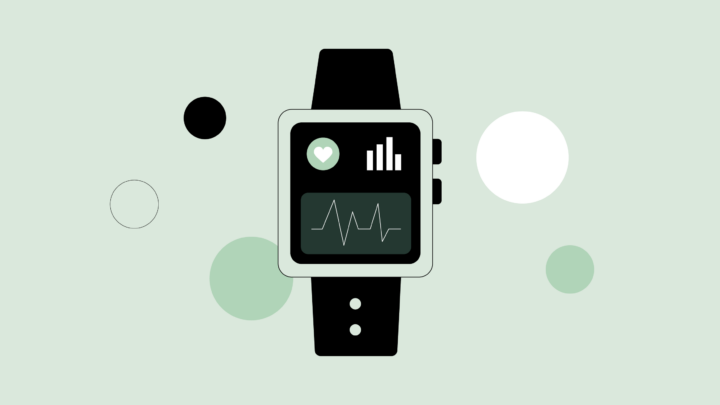
A shift in the seasons is not just about a change from hot weather to cold; it also manifests as behavioral changes in many people, and physicians have taken note. According to a recent Sermo poll, 52% of physicians agree that Spring has the most positive impact on health and wellbeing, while Winter has the least. One GP on Sermo put it simply by saying, “The winter season is the one that presents, in my opinion, the greatest risk of diseases, especially due to the prevalence of respiratory viruses.”
A rise in illnesses can leave both patients and physicians feeling unsettled. With this in mind, it’s valuable to explore the various effects seasonal changes can have on the human body and how physicians have experienced, and prepared for, these challenges.
5 common symptoms of seasonal changes
Physicians are often attuned to symptoms that tend to emerge with seasonal transitions. While individual responses may vary, certain symptoms consistently appear and warrant particular attention. These commonly include:
Fatigue and weakness
Feelings of listlessness or fatigue are common as patients adjust to seasonal changes. While fatigue is a normal part of life, the colder temperatures and shorter daylight hours of winter can intensify this sense of exhaustion. These conditions may also weaken the immune system, making individuals more susceptible to illness and contributing to an overall decline in well-being.
Digestive issues
Physical activity is directly tied to one’s ability to properly digest their food. When an individual is not getting enough exercise, he or she might experience an uptick in digestive issues. When surveyed about how seasonal changes impact their physical activity, physicians reported the following:
- More physically active outdoors during the warmer months: 53%
- Adjust activities based on the seasons: 24%
Simply put, most people tend to vary their activity levels based on what the weather is like outside. Therefore, they might experience more digestive issues during the colder months as they are spending less time outside and thus getting in less movement.
Increased instances of allergies and infections
Seasonal shifts often lead to a rise in both allergies and infections. In spring and fall, airborne allergens like pollen and mold spores can trigger allergic reactions, especially in individuals with sensitivities or pre-existing respiratory conditions. During colder months, people tend to spend more time indoors, where viruses and bacteria spread more easily—leading to higher rates of respiratory infections such as colds, flu, and bronchitis. These seasonal patterns can strain the immune system. A GP on Sermo shares their personal experience, “In my personal case I am a person who suffers from allergic rhinitis and seasonal changes cause the appearance or worsening of my symptoms so if it influences my personal state of health”
Disrupted sleep patterns
Ideally, the average adult should get between 7-9 hours of sleep per night. Light patterns play a significant role in sleep patterns, and lengthier or shorter periods of daylight during different seasons can create havoc for one’s sleep patterns.
Mood changes
One common symptom associated with seasonal changes is a shift in mood. Individuals who are typically upbeat and optimistic may experience a noticeable decline in their emotional well-being, struggling to maintain a positive outlook. This phenomenon, known as Seasonal Affective Disorder (SAD), can significantly impact quality of life and presents a serious challenge for those affected.
Conversely, the arrival of warmer months often brings an improvement in mood, with increased sunlight and outdoor activity contributing to a more positive mental state. 68% of surveyed physicians on Sermo agreed that they notice an uplifted mood during certain seasons, with One Internist based in the United States saying, “Spring and summer are best because greenery and brighter colors are helpful with uplifting mood. I look out the windows in our clinics a lot.”
Seasonal care strategies for better patient outcomes
Physicians are increasingly aware of the health risks that can emerge as the seasons change. In response, many are focusing on proactive strategies they can recommend to help patients manage and mitigate seasonal symptoms—ranging from mood shifts to respiratory issues and weakened immunity.
Proactive seasonal risk screening
The further ahead of health problems that physicians can get, the better they can address them with patients. This is true at both the individual level as well as at the public health level. A few elements of proactive seasonal risk screening at the public level include:
- Seasonal disease pattern analysis: it is common to hear people say things like “it looks like it is going to be a bad flu season this year”. These statements don’t come out of nowhere. Rather, they are based on pattern analysis of various diseases that are known risk factors for the public. By observing the patterns of these diseases, the medical community can better prepare the public for outbreaks.
- Early warning signs and preparation: the medical community can issue warnings to the public about potential outbreaks of emerging diseases. This gives the public a heads-up that certain illnesses might be more likely to impact them and allow them to take precautionary steps ahead of time.
- Continuous monitoring: following up and monitoring various illnesses is something else that the medical community is tasked with. Keeping tabs on the data and understanding how patterns are formed is all part of the process.
These measures are typically taken at the public health level, but they can also be implemented by physicians on a community basis.
Adjust medication management
Adjusting the levels of medications that a given patient takes can be helpful for reaching the best possible health outcome. One physician on Sermo shared, “It is well known that when we treat hypertension in winter, when summer arrives we will have to reduce medication for hypotension, BP tends to decrease during the summer months and patients may be susceptible to dehydration and kidney damage, especially if BP is too low, particularly when treated with diuretics. On the contrary, if we diagnose and treat hypertension in summer, when winter arrives we will have to increase treatment because we may be falling short, requiring greater pharmacological intervention to keep blood pressure under control during winter.”
Utilize remote monitoring and telehealth
The rise of telehealth and remote monitoring has created opportunities for physicians to provide medical advice and support to patients even without an office visit. For various ailments that flare up as a result of seasonal changes, it might be prudent to observe a patient remotely and offer advice and consultation without physical interaction. This can reduce the spread of illnesses such as colds and flu.
Leverage data to drive practice improvements
Fortunately, the medical community has had many years to gather data and test assumptions about a wide variety of symptoms that appear as the seasons change. That data can be leveraged to improve any physician’s practice, such as proactively educating patients on expected trends, or preparing for an influx of patients during certain seasons. Doctors can and should adjust treatments based on seasonal data as well as a patient’s previous medical history. Luckily, that data is constantly pouring in and is more accessible than ever before.
Tailor preventive care by season
When polled, physicians on Sermo say that they already adjust how they take care of their health during different seasons. When asked how they prepare for seasonal change, 62% of physicians said they adjust their diet and exercise based on the season, and 27% prioritize sleep and stress management. Additionally, 46% advise eating a balanced diet year-round, with an emphasis on increasing fruit and vegetable intake in the spring and summer.
Physicians should encourage patients to adopt these same seasonal habits—emphasizing the importance of tailoring diet, exercise, and self-care routines to match environmental and physiological changes. By modeling and recommending these evidence-based behaviors, doctors can help patients proactively maintain their health and build resilience throughout the year.
Navigating season change
Many patients are open to making seasonal lifestyle adjustments, but they often need a gentle prompt or guidance from their physicians to take action. Physicians are in a unique position to offer that support—while also being mindful of their own well-being during seasonal transitions. Focusing on foundational health habits and leveraging existing clinical data can help both patients and providers effectively navigate the challenges that come with changing seasons. One GP on Sermo put it, “It is important to recognize how each season can affect our health and well-being, and adapt our habits and routines to maintain optimal balance throughout the year. Observing how we respond to seasonal changes can help us adjust our diet, physical activity and self-care to maximize our well-being at every time of the year.”
Doctors on Sermo offer discussion and insight into their strategies for helping patients manage medication, lifestyle changes, and moods during the changing seasons. Join the Sermo global physician community to share your strategies, and to learn from others.















